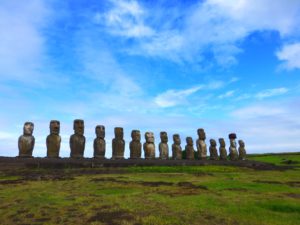Positive / Negative Impacts of Tourism
Positive Impacts of Tourism
- Employment opportunities for more than 400,000 individuals in the Tourism industry. Chile has seen a steady increase of employment opportunities within the industry over the past several years. Many of these opportunities are to be found within the Food and Beverage sector.
- Chile has made several changes to their tourism establishments over the past few years. Some of these changes have encouraged organizations across the country to build new and sustainable standards. A recent outcome of this is Chile’s solar powered metro. This project is known as “Pelícano”, and is expected to reduce Chile’s carbon footprint at an estimated 30% by 2030.
-
Chile has taken advantage of its landscape, history, culinary fusions and culture to help it discover new types of tourism. Some of the many different types of tourism Chile has immersed in are: Astro-tourism / Wine and gastronomy tourism / Indigenous tourism / Routes development / Adventure and sports tourism / Rural tourism. Chile has worked closely with its Ministry of Education for its Astro-Tourism sector to stay up to date on all the information. Chile has also improved its value and appreciation for its indigenous peoples and lands allowing tourists to learn and understand their ancestral origins.
-
Chile also recognizes that it might not have the best education in some parts of the country. Chile has learned to allow tourists to help build a brighter future for children in developing areas of the region. Their Volun-Tourism sector allows tourists to contribute to developing communists, health care and conservation.
- Currently, Chile Is ranked at 9th place in America when it comes to arrival and 11th in terms of
total revenue generated from the tourism industry.
Negative Impacts of Tourism

- Easter Island used to produce 1.4 metric tons of waste per year; however, that has doubled to a current 2.5 tons. The amount of residents has increased, but so have visitors. Due to the now populated area, the island has had to limit visitors from a 90 day stay to a 30 day stay only. This is expected to help preserve the land and protect its residents. It is a positive thing for the residents to exercise their rights and voice out against visitors, but will this action resurrect the lands?
- Most of the tour inflow to Chile happens in Santiago, the capital city. This means that whatever happens in Santiago affects visitor decisions. With the recent abrupt demonstrations, Chile has seen
 many visitors cancel their flights to the city. This is negative because the country relies on one major airport in their mani city, meaning all other regions have no actual inflow of tourists. This has increased the crime rate and organized gang theft within the City of Santiago.
many visitors cancel their flights to the city. This is negative because the country relies on one major airport in their mani city, meaning all other regions have no actual inflow of tourists. This has increased the crime rate and organized gang theft within the City of Santiago. - Deforestation in Chile has been a growing concern. This does not come as a direct impact of the tourism industry, but it has contributed. Wildfires in Chile happen seasonally and annually. This a result of the hot sun and barely humid forests. As the country claims to now grow sustainably, there have been no national call to actions to help keep the forests green. Several non-academic articles mention how the tourism industry claims to be sustainable, yet does not use any revenue towards protecting its land.

- Air pollution is nothing new to Chile. Santiago is the second city in the world with horrible air quality. Air based transportation systems involved with the tourism industry have not contributed to any short or long term measures to protect the air. With a lot of flight going in and out of Santiago city, it only becomes worse.
- Some areas in Chile have experienced types of voluntourism they label as “commercial”. Locals feel that some of the initiative to help communities grow and develop is nothing more than a hoax to launder money through the country.
Suggested reading for more information: LEAVING MORE THAN FOOTPRINTS: IMPACTS OF TOURISM AND PERCEPTIONS OF CHANGE IN CHILEAN PATAGONIA https://scholarworks.umt.edu/cgi/viewcontent.cgi?article=12369&context=etd

